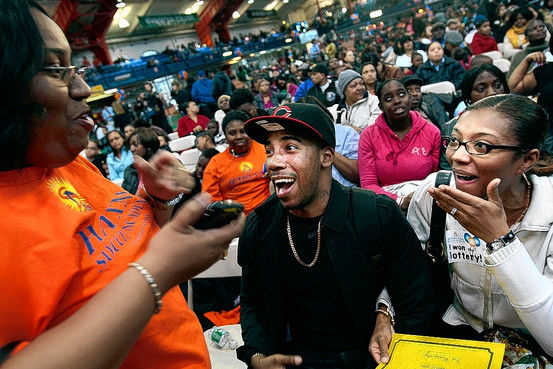High_Gravity
Belligerent Drunk
No Longer Majority Black, Harlem Is in Transition

As Population Shifts in Harlem, Blacks Lose Their Majority - NYTimes.com

For nearly a century, Harlem has been synonymous with black urban America. Given its magnetic and growing appeal to younger black professionals and its historic residential enclaves and cultural institutions, the neighborhoods reputation as the capital of black America seems unlikely to change soon.
I feel a community here that I don't feel in other parts of the city, said Laura Murray, a student.
But the neighborhood is in the midst of a profound and accelerating shift. In greater Harlem, which runs river to river, and from East 96th Street and West 106th Street to West 155th Street, blacks are no longer a majority of the population a shift that actually occurred a decade ago, but was largely overlooked.
By 2008, their share had declined to 4 in 10 residents. Since 2000, central Harlems population has grown more than in any other decade since the 1940s, to 126,000 from 109,000, but its black population about 77,000 in central Harlem and about twice that in greater Harlem is smaller than at any time since the 1920s.
In 2008, 22 percent of the white households in Harlem had moved to their present homes within the previous year. By comparison, only 7 percent of the black households had.
It was a combination of location and affordability, said Laura Murray, a 31-year-old graduate student in medical anthropology at Columbia, who moved to Sugar Hill near City College about a year ago. I feel a community here that I dont feel in other parts of the city.
Change has been even more pronounced in the narrow north-south corridor defined as central Harlem, which planners roughly define as north of 110th Street between Fifth and St. Nicholas Avenues.
There, blacks account for 6 in 10 residents, but those born in the United States make up barely half of all residents. Since 2000, the proportion of whites living there has more than doubled, to more than one in 10 residents the highest since the 1940s. The Hispanic population, which was concentrated in East Harlem, is now at an all-time high in central Harlem, up 27 percent since 2000.
Harlem, said Michael Henry Adams, a historian of the neighborhood and a resident, is poised again at a point of pivotal transition.
Harlem is hardly the only ethnic neighborhood to have metamorphosed because of inroads by housing pioneers seeking bargains and more space Little Italy, for instance, has been largely gobbled up by immigrants expanding the boundaries of Chinatown and by creeping gentrification from SoHo. But Harlem has evolved uniquely.
Because so much of the community was devastated by demolition for urban renewal, arson and abandonment beginning in the 1960s, many newcomers have not so much dislodged existing residents as succeeded them. In the 1970s alone, the black population of central Harlem declined by more than 30 percent.
As Population Shifts in Harlem, Blacks Lose Their Majority - NYTimes.com




